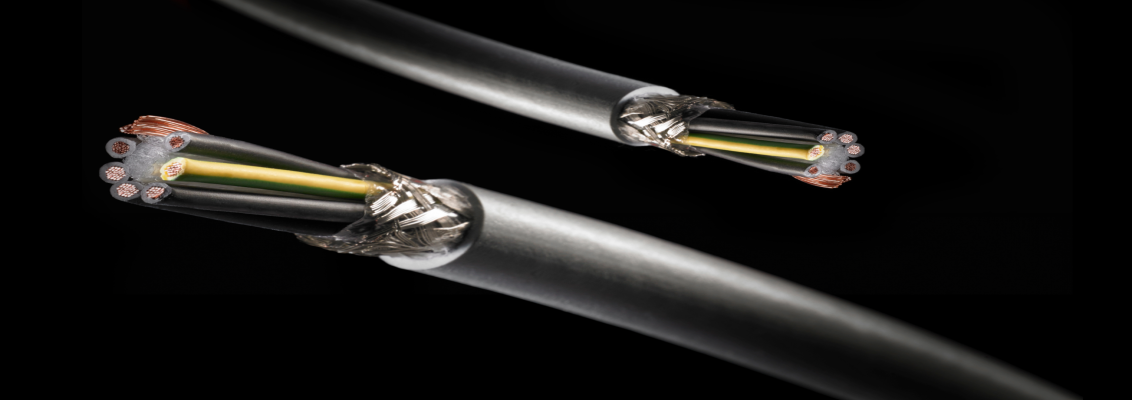YY, SY, and CY Cables: Do You Know the Difference?
Where can you use YY, SY, and CY cables? Discover the difference between each control cable type and the applications you can use them for.

What Are YY, SY, and CY Cables?
YY, SY, and CY are all classifications of control cables. They can be used across a wide range of industries and applications where power and control are required. However, each of these cables has a variety of sub-categories and properties that allow them to be well-matched to individual requirements.
It was actually the European Committee for Electrotechnical Standardisation (A.K.A. CENELEC) that identified the need for new naming conventions that would categorise these cables. Hence, YY, SY, and CY.
So, before we go into detail about the use of each cable and why there’s a rising concern in the industry, let’s look at what they stand for.
What Does YY Stand For?
So, the first “Y” in the YY tells us that the cable’s cores have PVC insulation. The second “Y” tells us that the cable has a PVC outer jacket (also known as a cable sheath). As there’s no other lettering here, we can assume there is no screening.
What Does SY Stand For?
As we already know what the second letter stands for (the cable has a PVC outer jacket), let’s look at the “S”. This letter stands for the fact that the cable has a galvanised steel wire braid (GSWB) around the cable’s cores. This provides light armour but doesn’t specifically protect the cable or surrounding components from electrical interference.
What Does CY Stand For?
The CY cable is similar to the SY cable in that it is a screen and a PVC outer jacket. However, the difference is in the “C”, which tells us that a copper wire braid is covering the cores. With the right level of braiding, it offers EMC (Electro-Magnetic Compatability) to limit damage from noise and electromagnetic waves.
How Are YY, SY, and CY Cables Used?
As control cables, they are used in various industries and applications across the UK and worldwide. For example, industrial automation, railway infrastructure, manufacturing, automotive line production, intralogistics, and more.
These types of cables are often flexible and can be manufactured with additional properties that make them more suited to specific functions. For example, they come with varied cores and conductor sizes and can be available in a low smoke halogen-free (LSHF) version.
According to the British Approvals Service for Cables (BASEC), each cable is suited to different applications, in the most general way. For example, they say the YY cable is suited to environments with light mechanical stress, the SY cable is suited to medium-to-high mechanical stress, and the CY cable is best for when the application requires protection against electromagnetic influences.
What Are the Concerns About YY, SY, and CY Cables?
The concern surrounds a lack of British standardisation for these types of cable. To that end, YY, SY, and CY cables are not currently recommended for fixed installation under the IET Wiring Regulations BS 7671.
The categorisation of YY, SY, or CY cables doesn’t specify important properties that standardise them for use under certain circumstances. For example, the type of PVC, temperature range, bending radii, nominal voltage, sheath colour, current carrying capacity, and more.
Some manufacturers claim their control cables comply with the BS EN 50525 regulation. However, this regulation doesn’t have any set standard for screen braiding, making it worthless for SY and CY cables.
That said, even without British standards, there are ways to ensure the consistent and high-quality production of performing quality cables. German Standards Institute focuses on electrical, electronic, and information technologies and lists guidelines encompassing these control cables. These are known as DIN VDE standards.
At HELUKABEL, we value safety and performance above all. That’s why we offer control cable solutions with reference to DIN VDE standards.
What Are YY Cables?
YY cables are unscreened, flexible, control cables. They also fall under the categorisation of being Class 5. This means they are fine-stranded cables with a good level of flexibility. They are manufactured in many configurations that allow them a high level of versatility. For example, they may be earthed, have colour-coded cores, have various conductor sizes, etc.
Look at HELUKABEL UK’s most popular YY cable: the JZ-500 .
What Are SY Cables?
Like the YY, the SY is a flexible control cable; but this one has a GSWB screen. While non-EMC, they are considered armoured and designed to tackle more demanding applications. For example, the right braiding level will allow them to withstand sharp impacts such as a screwdriver. They are often used to link and regulate but have limited us in outside environments due to little UV protection.
Look at HELUKABEL UK’s most popular SY cables: the BS-SY-JZ and the BS-SY-JB .
What Are CY Cables?
CY cables are specifically designed to withstand more complex applications. They meet EMC with the right level of tinned copper braiding which makes them effective at stable signal transmission in challenging environments. However, it does require the use of EMC cable glands and associated accessories in order to achieve EMC capabilities. This limits electromagnetic impact, vibrations, and mechanical stress.
Look at HELUKABEL UK’s most popular CY cable: the F-CY-JZ .
